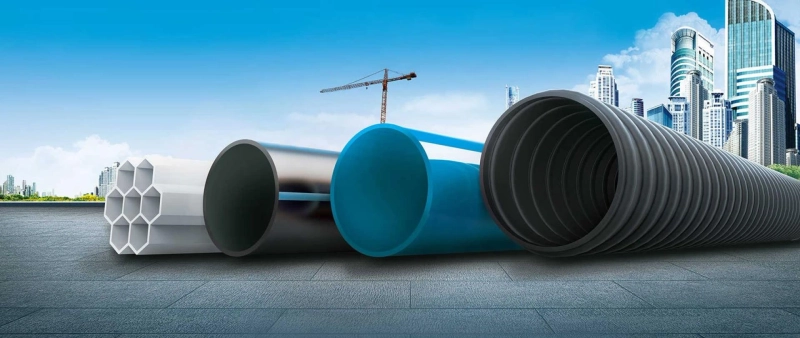Proper drainage is essential for any construction project, whether it\'s a residential home, commercial building, or industrial facility. The choice of drain piping installation in Carson NV for drainage systems is crucial for ensuring efficient water removal, preventing damage, and maintaining the overall integrity of the structure. This article will delve into the various types of pipes used for drainage, their characteristics, and suitable applications.
Factors Affecting Pipe Selection and it Types
Several factors influence the selection of pipes for drainage systems:
- Pipe Material: Different materials possess unique properties affecting durability, corrosion resistance, and cost.
- Pipe Diameter: The pipe\'s size determines its capacity to handle water flow.
- Depth of Installation: The pipe\'s depth influences the type of material required to withstand soil pressure.
- Soil Conditions: Soil type and composition impact pipe performance.
- Environmental Factors: Climate, temperature, and exposure to chemicals can affect pipe lifespan.
1. PVC (Polyvinyl Chloride) Pipes
- Characteristics: Lightweight, corrosion-resistant, and cost-effective.
- Applications: Commonly used for underground drainage systems, stormwater management, and sewer lines.
- Advantages: Easy installation, long lifespan, and minimal maintenance.
- Disadvantages: Susceptible to damage from heavy loads and extreme temperatures.
2. HDPE (High-Density Polyethylene) Pipes
- Characteristics: Flexible, durable, and resistant to chemicals and corrosion.
- Applications: Suitable for underground drainage, stormwater management, and agricultural irrigation.
- Advantages: Excellent impact resistance, long lifespan, and minimal joint leakage.
- Disadvantages: Higher cost compared to PVC pipes.
3. Cast Iron Pipes
- Characteristics: Heavy-duty, durable, and resistant to corrosion.
- Applications: Traditionally used for main sewer lines and industrial drainage systems.
- Advantages: High strength and long lifespan.
- Disadvantages: Heavy weight, installation difficulty, and susceptibility to rust over time.
4. Clay Pipes
- Characteristics: Durable, porous, and naturally resistant to root intrusion.
- Applications: Historically used for underground drainage but less common today.
- Advantages: Excellent strength and long lifespan.
- Disadvantages: Heavy weight, difficulty in installation, and susceptibility to cracking.
5. Corrugated Pipes
- Characteristics: Lightweight, flexible, and cost-effective.
- Applications: Used for agricultural drainage, stormwater management, and erosion control.
- Advantages: Easy installation and good water flow capacity.
- Disadvantages: Lower strength compared to solid pipes.
Choosing the Right Pipe
Selecting the appropriate pipe for your drainage system depends on various factors:
- Budget: PVC and corrugated pipes are generally more cost-effective than HDPE and cast iron.
- Soil Conditions: Clay pipes are suitable for clay soil, while PVC and HDPE are better for various soil types.
- Water Flow: The pipe\'s diameter should be adequate to handle the expected water flow.
- Installation Depth: The pipe material should withstand the pressure at the installation depth.
- Environmental Considerations: Consider the impact of chemicals, temperature, and other environmental factors on the pipe.
Installation and Maintenance
Proper installation and regular maintenance are crucial for the efficient performance and longevity of your drainage system. Follow manufacturer guidelines and local building codes for installation. Inspect the system regularly for blockages, leaks, or damage.
Conclusion
The choice of pipe for drainage systems is a critical decision that impacts the system\'s efficiency, durability, and overall performance. By understanding the different types of pipes, their characteristics, and suitable applications, you can select the best option for your specific needs. Consider factors such as budget, soil conditions, water flow, installation depth, and environmental conditions to make an informed decision. Proper installation and regular maintenance will ensure the long-term effectiveness of your drainage system.
FAQs
What is the most common type of drainage pipe?
PVC pipes are the most commonly used type of drainage pipe due to their cost-effectiveness, ease of installation, and corrosion resistance.
How do I choose the right pipe diameter for my drainage system?
The pipe diameter should be selected based on the expected water flow rate. Consult with a professional engineer or plumber to determine the appropriate size.
Can I use different types of pipes in the same drainage system?
It is generally possible to use different types of pipes in the same system, but it\'s essential to ensure compatibility and proper connections. Consult with a professional for guidance.
How often should I inspect my drainage system?
Regular inspections are recommended, at least once a year, to check for blockages, leaks, or damage.
What can I do to prevent root intrusion in my drainage pipes?
Using pipes with root-resistant materials like clay or PVC can help. Regular cleaning and maintenance can also reduce the risk of root intrusion.


